#1953 Garbo
Text




Teresita Montez in the Spanish magazine Garbo, dated from 31st October 1953. (Cover and inside)
In this small article it can be read that Teresita knows her modelling career is short and at 30 is over. After modelling she wants to make films, but she has succeed as her own and nobody mentions her famous sister.
Teresita is a Lady when she is working and when she's not, that's why she is a successful model. She is very nice, smiles a lot and is very beautiful, qualities a model should have.
She began modelling for a dressmaker and now she is a free-lance model, she works where a shooting is, it can be in Paris, Brussels, London or New York.
This magazine can be found at todocoleccion. Very special thanks to @shannendoherty-fans for sharing!!
#Teresita Montez#model#Garbo#Garbo magazine#1953#1953 Teresita#1953 Garbo#collaboration#my scans#Montez Family#Gracia Family
11 notes
·
View notes
Text



Greta Garbo and George Schlee, Portofino, Italy, June 1953
86 notes
·
View notes
Text
“ All’atto di redigere il testo di un parlato radiofonico si dovrà dunque evitare in ogni modo che nel radioascoltatore si manifesti il cosiddetto «complesso di inferiorità culturale», cioè quello stato di ansia, di irritazione, di dispetto che coglie chiunque si senta condannare come ignorante dalla consapevolezza, dalla finezza, dalla sapienza altrui. Questo «complesso» determina una soluzione di continuità nel colloquio tra il dicitore e l’ascoltatore, crea una zona di vuoto, un «fading» spirituale nella recezione. Ad ovviare la qual calamità radiofonica è in particolare consigliabile:
a) in ogni evenienza astenersi dall’uso della prima persona singolare «io». Il pronome «io» ha carattere esibitivo, autobiografante o addirittura indiscreto. Sostituire all’«io» il «noi» di timbro resocontisticoneutro, o evitare l’autocitazione. Al giudizio: «Io penso che la Divina Commedia sia l’opera maggiore di Dante», sostituire: «La Divina Commedia è ecc.»;
b) astenersi da parole o da locuzioni straniere quando se ne possa praticare l’equivalente italiano. Usare la voce straniera soltanto ove essa esprima una idea, una gradazione di concetto, non per anco trasferita in italiano. Per tal norma inferiority-complex, nuance, Blitz-Krieg e chaise-longue dovranno essere sostituiti da complesso d’inferiorità, sfumatura, guerra lampo e sedia a sdraio: mentre self-made man, Stimmung, Weltanschauung, romancero, cul-de-lampe e cocktail party potranno essere tollerati;
c) evitare gli sterili elenchi dei nomi di persona quando non si possono caratterizzare o comunque definire le persone chiamate in causa. Meglio omettere dei «nomi da manuale», che infastidire l’ascoltatore citando nomi destinati a spegnersi appena pronunziati, come faville lasciate addietro per un attimo dalla corsa d’una locomotiva;
d) operare analogamente con le date. In un esposto di carattere storico le date costituiscono opportuno ammonimento, gradito appoggio e gradita eccitazione per la memoria. Tali appaiono al viaggiatore le indicazioni chilometriche. Delle date si dovrà misurare il valore e l’intercorrenza più conveniente. Si dovranno gerarchizzare, distanziare le une dalle altre; e porgerle comunque con garbo all’attenzione di chi ascolta, quasi le richiedesse opportunità, necessità;
e) astenersi dal presupporre nel radioabbonato conoscenze che «egli», il «qualunque», non può avere e non ha. Inibirsi la civetteria del dare per comunemente noto quello che noto comunemente non è. A nessun uomo, per quanto colto, si può chieder di essere una enciclopedia. I lemmi dell’enciclopedia rappresentano la fatica di migliaia di collaboratori;
f) entrare subito o pressoché subito in medias res: non tener sospeso l’animo del radioascoltatore con lunghi preamboli, con la vacuità di premonizioni superflue che il valore cioè il costo del tempo radioparlato sono ben lontani dal giustificare, dall’ammettere. “
Carlo Emilio Gadda, Norme per la redazione di un testo radiofonico.
NOTA: durante la sua collaborazione con la RAI (accettata per necessità e mal sopportata), presso i servizi di cultura del Terzo programma (1950-55), Gadda redasse un breve vademecum a beneficio degli autori radiofonici e destinato a circolazione interna (veniva allegato ai contratti per i collaboratori). La prima edizione delle Norme (ERI, Torino, 1953) apparve senza il nome dell’autore ma firmata in calce «IL TERZO PROGRAMMA»; seguì una seconda edizione (ERI, Torino, 1973), questa volta a nome di Gadda. Il testo fu quindi accolto nelle raccolte postume degli scritti minori dell’ «ingegnere».
#Carlo Emilio Gadda#radio pubblica#linguaggio#mass media#complesso di inferiorità culturale#letture#leggere#parlare#intellettuali italiani del XX secolo#barbarismi#comunicazione#Storia della lingua italiana#scrittori lombardi#codici linguistici#Radiotelevisione italiana#RAI#citazioni#società italiana#Unità linguistica italiana#italiano standard#anni '50#cultura#Terzo programma#autori radiofonici#vademecum#lingue#manuali d'istruzione#Torino#neologismi#conservatorismo
29 notes
·
View notes
Text
youtube
Remembering Nanci Griffith who would have turned 70 today (July 6, 1953 – August 13, 2021). Here is a 1991 performance of "Late Night Grande Hotel" from Ireland.
_______________________
Late Night Grande Hotel
Songwriter: Nanci Griffith
I'm working on a morning flight to anywhere but here
I'm watching this evening fire burn away my tears
All my life I've left my troubles by the door
Leavin' is all I've ever known before
It's not the way you hold me when the sun goes down
It's not the way you call my name that left me stranded on the ground
It's not the way you say you hear my heart when the music ends
I am just learning how to fly away again
It's not the way you say you hear my heart when the music ends
I am just learning how to fly away again
And maybe you were thinkin'
That you thought you knew me well
But no one ever knows the heart of anyone else
I feel like Garbo in this late night Grande hotel
? Cause living alone is all I've ever done well
It's not the way you hold me when the sun goes down
It's not the way you call my name that left me stranded on the ground
It's not the way you say you hear my heart when the music ends
I am just learning how to fly away again
It's not the way you say you hear my heart when the music ends
I am just learning how to fly away again
And maybe you were thinkin'
That you thought you knew me well
But no one ever knows the heart of anyone else
I feel like Garbo in this late night Grande hotel
? Cause living alone is all I've ever done well
It's not the way you hold me when the sun goes down
It's not the way you call my name that left me stranded on the ground
It's not the way you say you hear my heart when the music ends
I am just learning how to fly away again
It's not the way you say you hear my heart when the music ends
I am just learning how to fly away again
And maybe you were thinkin'
That you thought you knew me well
But no one ever knows the heart of anyone else
I feel like Garbo in this late night Grande hotel
? Cause living alone is all I've ever done well
5 notes
·
View notes
Note
I actually sent in an ask a while ago which you answered about Victoria and the Corleone family’s film preferences and favorite actors but I realized I haven’t asked about Marina or Kay 👀👀 and do they have favorite musicians
Ooh, but of course!! 🤭💞 I can see Miss Marina's favourite actresses and their films being: Marilyn Monroe ("Gentlemen Prefer Blondes" 1957), Rita Hayworth ("Gilda" 1946), and Ava Gardner ("Singapore" 1947). As for actors and their films, I would say: Cary Grant ("Suspicion" 1941), Clark Gable ("Never Let Me Go" 1953), and Gary Cooper ("Love in The Afternoon" (1957)!
As for Kay, I think she would be a big fan of James Dean, Humphrey Bogart, and Frank Sinatra! For actresses, I say she'd probably enjoy the films of Greta Garbo, Ingrid Bergman (of course lol she did go to see a film of hers with Michael after all! 🤭) and Vivien Leigh. 💓
3 notes
·
View notes
Photo

TV Guide - August 1 - 7, 1964
The “Today” cast
Hugh Downs, Maureen O'Sullivan, Frank Blair and Jack Lescoulie of Today
Hugh Malcolm Downs (February 14, 1921 – July 1, 2020) Broadcaster, television host, news anchor, TV producer, author, game show host, and music composer. A regular television presence from the 1940s through the 1990s, he had several successful roles on morning television, prime time television, and late night television. Downs served as announcer/sidekick for Tonight Starring Jack Paar from 1957 to 1962, co-host of the NBC News program Today from 1962 to 1971, host of the Concentration game show from 1958 to 1969, and anchor of the ABC News magazine 20/20 from 1978 to 1999. (Wikipedia)
Maureen O'Sullivan (May 17, 1911 – June 23, 1998) Actress, who played Jane in the Tarzan series of films during the era of Johnny Weissmuller. She performed with such actors as Laurence Olivier, Greta Garbo, William Powell, and Myrna Loy. In 2020, she was listed at number eight on The Irish Times list of Ireland's greatest film actors. In 1964 she was the Today Girl for NBC’s news program Today. (Wikipedia)
Frank S. Blair Jr. (May 30, 1915 – March 14, 1995) Broadcast journalist for NBC News, perhaps best known for being the news anchor on the Today program from 1953 to 1975. (Wikipedia)
Jack Lescoulie (November 17, 1912 – July 22, 1987) Radio and television announcer and host, notably on NBC's Today during the 1950s and 1960s; a newspaper source lists his date of birth as May 17, 1912. Lescoulie was also known for his voice impersonation of comedian Jack Benny. (Wikipedia)
0 notes
Photo










old hollywood women from this list x
• katherine hepburn / the philadelphia story (1940)
• bette davis / jezebel (1938)
• audrey hepburn / roman holiday (1953)
• ingrid bergman / casablanca (1942)
• greta garbo / camille (1936)
• marilyn monroe / gentlemen prefer blondes (1953)
• elizabeth taylor / cleopatra (1963)
• judy garland / wizard of oz (1939)
• marlene dietrich / morocco (1930)
• joan crawford / grand hotel (1932)
#i picked my favorite movies from them to display#old hollywood#katherine hepburn#the philadelphia story#bette davis#jezebel#audrey hepburn#roman holiday#ingrid bergman#casablanca#greta garbo#camille#marilyn monroe#gentlemen prefer blondes#elizabeth taylor#cleopatra#judy garland#wizard of oz#marlene dietrich#morocco#joan crawford#grand hotel#movies#hollywood#*
289 notes
·
View notes
Text
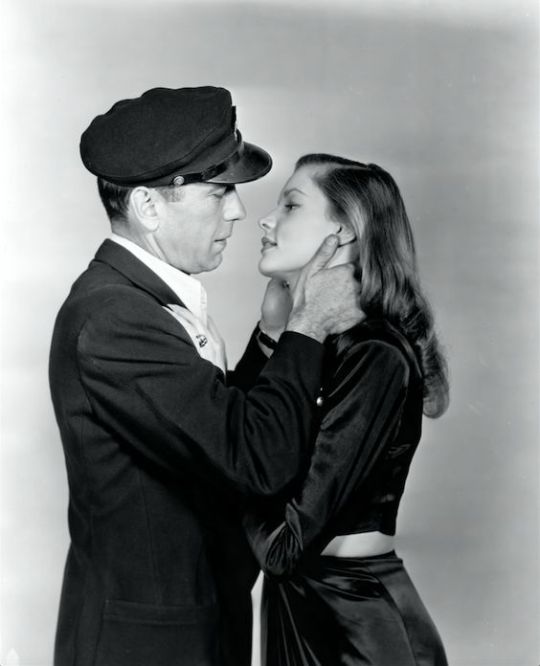


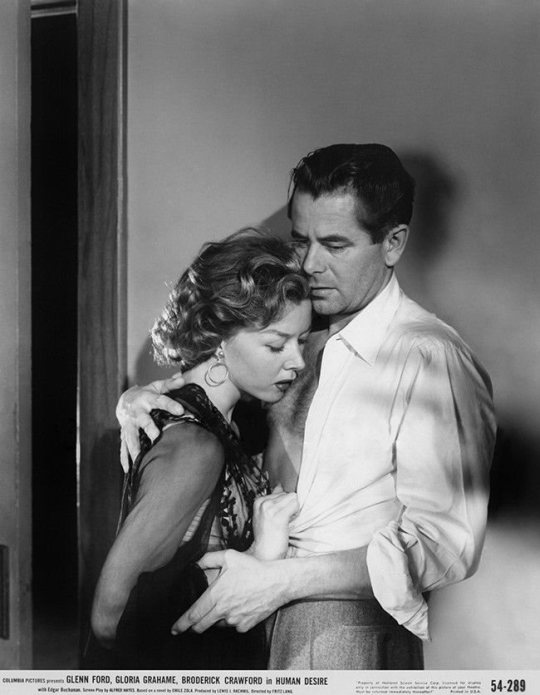
Here's 5 to watch on TCM for the week of Sept. 13, 2021:
1. Vivacious Lady (1938) at 4:15 pm ET/1:15 pm PT Tuesday, Sept. 14: Tuesday's daytime lineup is filled with film's from the great leading ladies of '30s, such as Irene Dunne (Theodora Goes Wild at 9:45 am ET), Katharine Hepburn (Bringing Up Baby at 11:30 am ET), and Greta Garbo (Ninotchka at 6 pm ET). Click the link for the full September schedule: https://www.tcm.com/schedule-monthly.... We'll be watching Ginger Rogers as a nightclub singer who entrances a sheepish botany professor (James Stewart) in this cute rom-com. Beulah Bondi (once again playing Jimmy's mom) is a delight.
2. Intruder in the Dust (1949) at midnight ET/9 pm ET Wednesday night/Thursday morning: The wonderful Puerto Rican actor Juano Hernandez plays a black man who becomes the target of a lynch mob in this excellent adaptation of William Faulkner's novel. Intruder in the Dust is part of a night of films celebrating Hispanic Heritage Month.
3. Key Largo (1948) at 12:15 pm ET/9:15 am PT Thursday, Sept. 16: All four of Lauren Bacall's films with her husband/costar Humphrey Bogart are airing on Thursday afternoon as part of a birthday tribute to the late actress. Things start out with their final film together, Key Largo, before moving on to Dark Passage (1947) at 2:15 pm ET. Their two best films, the classic noirs The Big Sleep (1946) and To Have and Have Not (1944), are airing at 4:15 pm ET and 6:15 pm PT.
4. I Love Melvin (1953) at 10 pm ET/7 pm PT Thursday, Sept. 16: Donald O'Connor once again shows off his superhuman dancing skills in the roller-skating number in this pleasant musical comedy. In our opinion, O'Connor is even more impressive than Gene Kelly's famous skate/dance in It's Always Fair Weather (1955). BTW that film is airing at 8 pm ET.
5. Human Desire (1954) at midnight ET/9 pm PT Saturday night/Sunday morning: The great Gloria Grahame's desperate housewife in this Fritz Lang-directed noir is both the ultimate femme fatale and something much more rich and strange. Actor Dana Delany, who recently wrote an appreciation of Grahame in Noir City magazine, will introduce this film with Noir Alley host Eddie Muller.
Human Desire will have an encore presentation at 10 am ET Sunday.
#TCM#TCM picks#TCM party#screwball september#screwball comedy#hispanic heritage#Lauren Bacall#film noir#noir#TCM spotlight#roller skates#noir alley#vintage movies#classic movie stars#old hollywood
31 notes
·
View notes
Text

LEM BILLINGS
Although it is not widely known, John Kennedy’s life long friend was gay.
Kirk LeMoyne "Lem" Billings was a prep school roommate of Kennedy, an usher at his wedding and a campaigner for his successful 1960 presidential bid.
Joseph Kennedy Sr. called Lem "my second son”.
Billings, a 16-year-old third-year student, and Kennedy, a 15-year-old second-year student, met at prep school, in the fall of 1933.
They became fast friends, drawn to each other by their mutual distaste for their strict school.
Billings repeated his senior year so that he and Kennedy could graduate together in 1935.
The duo took a summer trip through Europe in the summer of 1937... two and a half months and solidified their friendship.
Billings was an usher at the wedding of Kennedy and Jacqueline Lee Bouvier in 1953, and usher at the wedding of Kennedy's sister Jean to Stephen Edward Smith in 1956.
He worked on Kennedy's presidential campaign in 1960.
In 1961, Billings declined Kennedy's offer to appoint him the first head of the Peace Corps or ambassador to Denmark. He later said: "I realized that I did not want to work for the president — because I felt it would change our relationship."
Lem visited the White House for most weekends during the Kennedy Administration. When a butler commented on the fact that Billings was leaving his belongings in one of the third-floor guest rooms, the First Lady replied: "He's been my house guest since I was married.”
When the First Lady was away, Billings organized White House dinner parties for the President and old friends.
And when the President traveled he kept the First Lady company.
Billings' role as "first friend" was assessed by many observers at the time and since. Ted Sorensen called him "an admirer — almost a fawning admirer — of his friend."
Billings saw the President for the last time when they dined at the White House with Greta Garbo on November 13, 1963,
Friends from the 1970s confirmed that Billings was gay, but not open to discussing it.
In 2006, looking back to the Kennedy Administration, Ben Bradlee (executive editor for the Washington Post) said: "I suppose it's known that Lem was gay....It impressed me that Jack had gay friends.
Jack made a big difference in my life," Billings said. "Because of him, I was never lonely. He may have been the reason I never got married."




#gay icons#Lem Billings#john fitzgerald kennedy#jfk#life long friends#jacqueline kennedy#Ben Bradley#open secret#gay BFF
168 notes
·
View notes
Text


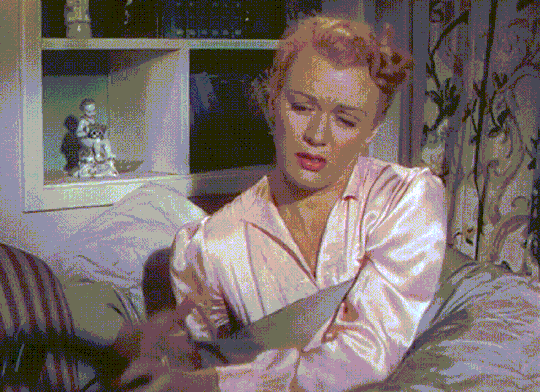
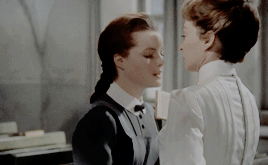



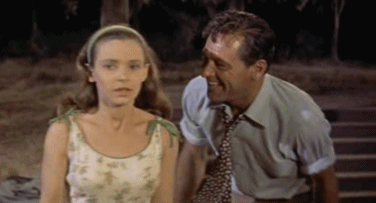

tagged by @glamourofyesteryear ✨ Thank you so much 🥰
Rule: List 9 fictional characters you identify with.
From left to right, top to bottom:
1. Elizabeth Bishop from Reaching from the Moon, 2014. (introvert, hates public speaking, cats over people)
2. Calamity from Calamity Jane, 1953. (loves to sing, brave, not afraid to get hands dirty, gayyyy, can do both butch and femme)
3. Viv from My Dream is Yours, 1949. (kinda grumpy, but actually has the biggest heart, reliable)
4. Manuela von Meinhardis from Madchen in Uniform, 1958 (gay, mommy issues, always in love with milfs)
5. Narcissa Malfoy from Harry Potter (quiet but would literally kill for the people she loves)
6. Estelle from Garbo Talks, 1984. (Greta Garbo 😍 Greta Garbo 😍 Greta Garbo 😍 greta Garbo 😍)
7. Eve from Stage Door, 1937 (lesbian, cats, doesn't give a sh*t)
8. Millie from Picnic, 1955 (tomboy, doesn't want to get marry, doesn't want kids, thinks she's ugly, yikes compliments, feminist)
9. Mademoiselle Julie from Olivia, 1951. (🥴💀)
I tag: @classicfilmgemss @the-deepbluesea @jazz-vampire @joanleslies @fabulousdarlings @mynameisbarbra and whoever wants to do it. If you are already tagged, ignore it :)
#miranda otto#doris day#eve arden#madchen in uniform#narcissa malfoy#helen mccrory#stage door 1937#picnic 1955#olivia 1951#edwige feuillère#reaching for the moon#calamity jane#romy schneider#lilli palmer#harry potter#garbo talks#anne bancroft
117 notes
·
View notes
Text



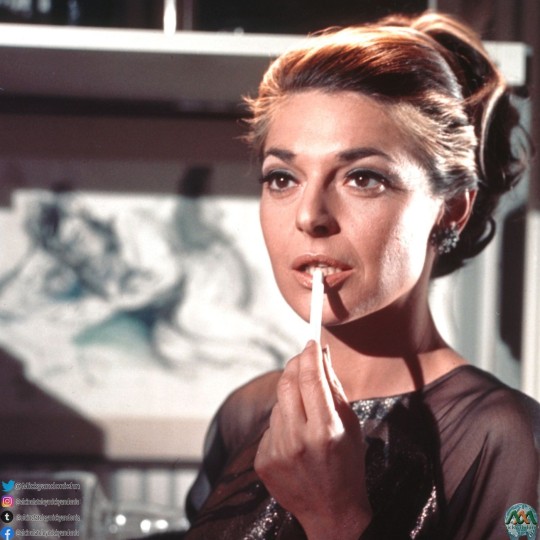


ANNE BANCROFT.
Filmography
1952 Don't Bother to Knock
1953 Tonight We Sing
1953 The Kid from Left Field
1953 Treasure of the Golden Condor
1953 The Robe
1954 The Raid
1954 Gorilla at Large
1954 Demetrius and the Gladiators
1955 New York Confidential
1955 The Naked Street
1955 A Life in the Balance
1955 The Last Frontier
1956 Walk the Proud Land
1956 Nightfall
1957 So Soon to Die
1957 The Restless Breed
1957 The Girl in Black Stockings
1962 The Miracle Worker
1964 The Pumpkin Eater
1965 The Slender Thread
1966 Seven Women
1967 The Graduate
1972 Young Winston
1974 The Prisoner of Second Avenue
1975 Hindenburg
1976 Silent Movie
1976 Lipstick
1977 The Turning Point
1977 Jesus of Nazareth
1976 The Bell Jar
1980 Fatso
1980 The Elephant Man
1983 To Be or Not to Be
1984 Garbo Talks
1985 Agnes of God
1986 'night, Mother
1986 84 Charing Cross Road
1988 Torch Song Trilogy
1989 Bert Rigby, You're a Fool
1992 Love Potion # 9
1992 Honeymoon in Vegas
1993 Mr. Jones
1993 Malice
1993 Point of No Return
1995 How to Make an American Quilt
1995 Home for the Holidays
1996 The Sunchaser
1996 Homecoming
1997 Critical Care
1997 G.I. Jane
1998 Middle East: Israel - Echoes From the Ancients
1998 Living with Cancer: A Message of Hope
1998 Mark Twain's America In 3D
1998 Great Expectations
1998 Antz
2000 The Living Edens: Anamalai - India's Elephant Mountain
2000 Keeping the Faith
2000 Up at the Villa
2001 Heartbreakers
2008 Delgo.
Créditos: Tomado de Wikipedia
https://es.wikipedia.org/wiki/Anne_Bancroft
3 notes
·
View notes
Text
“ La Belaglia è una bambina bellissima di diciassette anni, la pelle bianca, lo sguardo che esce dai begli occhi dolcissimo e innocente. È snella, delicata e già con le tiepidezze della donna benché un qualche cosa avverta di una incapacità a completarsi, una maledizione che è dietro alla sua bellezza e sarà quella che vincerà (o forse perché so la sua tara e che la madre morí qui al manicomio e il fratello è nei “corrigendi” a Firenze).
Quando questa ragazza è arrivata ha commosso tutte le infermiere per la sua dolce bellezza; essa non ha mai conosciuto la madre però sa che è morta qui e i primi giorni domandava alle infermiere se l'avevano conosciuta, come era fatta, come aveva gli occhi, cosa disse prima di morire ecc.
Nella cartella che l'accompagna (essa proviene dall'ospedale psichiatrico di S. Salvi) c'è scritto che prima di essere ricoverata a S. Salvi era dalle suore dove si comportava benissimo, si dimostrava buona, intelligente e solerte negli studi; un giorno apparve confusa, come parlasse in sogno e sempre piú si alterò finché fu ricoverata; e da S. Salvi fu trasferita a Lucca, nel nostro manicomio, perché è domiciliata in provincia di Lucca, in un paese qui vicino, dove suo padre lavora la terra.
I primi giorni che fu con noi non si distinse dunque che per la commozione che suscitava la sua dolce bellezza e i suoi davvero innocenti diciassette anni. Le domande che essa faceva su sua madre accrebbero la pietà e già si pensava di mandarla presto a casa, presso suo padre, che era venuto a trovarla e si era dimostrato affettuoso e delicato con la figlia, come uno che benché la pazzia gli abbia recato tanti malanni non rinuncia affatto né si duole di neppure uno dei suoi sentimenti.
Ma ieri la Belaglia ha cominciato a dire appassionatamente, ed ha continuato tutta la notte, con la sua tremante vocina che “è marcia, è in agonia” e mostra le due mani dicendole di un cadavere, che la sua orina è verde, e di nuovo aggiunge, con gli occhi piú belli per l'implorazione: «Sono in agonia».
Anche stamani ripeteva queste idee deliranti stringendosi all'infermiera come avesse paura di qualche cosa di orrendo che ineluttabilmente si avvicinava.
(Ho notato che le infermiere, molte delle quali non hanno figli, la curano con ogni garbo e, per esempio, la pettinano ogni mattina con tale cura che le trecce cadono morbide e perfette ai lati del collo, incorniciandola. E la fanciulla si presta a queste attenzioni come la pazzia non le impedisse di giudicare che alla bellezza si rende sempre omaggio.)
Ho dovuto trasferire la Belaglia dal piccolo, quasi sempre composto, reparto osservazione, alla “vigilanza”.
Timorosa, diffidente, verginea Maddalena che bagna di lacrime le trecce, mi ha ubbidito.
Una ammalata, già molto anziana, del reparto osservazione l'ha seguita fino alla porta come le portassero via un tesoro. Immensa potenza della verginea bellezza! questa anziana malata stava sempre zitta, chiusa nella tetraggine e oggi, poiché le strappavano la fanciulla, lei sempre pallida, si è irrorata nel volto, e mi ha detto concitatamente: «Siamo sempre state insieme, non me la tolga!». “
Mario Tobino, Le libere donne di Magliano, introduzione di Geno Pampaloni, A. Mondadori (collana Oscar n° 90), 1969²; pp. 58-61.
[1ª Edizione originale: Vallecchi, Firenze, 1953]
#Mario Tobino#letture#leggere#follia#pazzia#pietà#libri#Le libere donne di Magliano#psichiatria#malattia#psicologia#malattie della mente#autobiografismo#Maggiano#Toscana#letteratura del '900#Lucca#narrativa italiana#autobiografie#letteratura del XX secolo#poeti#citazioni letterarie#romanzo#ospedale psichiatrico#scrittori toscani#Legge Basaglia#matti#anni '50#lirismo#Geno Pampaloni
23 notes
·
View notes
Text
'All of you'

Fred Astaire and Cyd Charisse looking delicious in Silk Stockings (1957).
There are so many things I would like to say about this movie.
It is highly underrated.
Cyd did her best dancing (and acting).
A 58 year old Fred looks bewitching.
Cole Porter did the music and lyrics. (I just can't get over the tune of 'all of you')
It is certainly better than The Bandwagon (1953).
A must watch. See Garbo's Ninotchka (1939) [The original film that inspired this musical] after this if you haven't.

#fred astaire#old hollywood#fred and ginger#classic movies#cyd charisse#arthur freed#cole porter#1957#ninotchka#musical
28 notes
·
View notes
Note
11, 14, 20 and 28!!!
11. favorite quote(s): ok i went through my lb reviews where i usually put quotes i like ahshhs
às vezes eu fico imaginando de que forma que as coisas acontecem. primeiro vem o dia. tudo acontece naquele dia. até chegar a noite. que é a melhor parte. mas logo depois vem o dia outra vez. e vai... e vai e vai. e é sem parar. a única coisa que não tem mudado ultimamente é o santa cruz, nunca mais tem ganho nada, mas nem título de honra! e eu não tenho encontrado alguém que me mereça. só se ama errado. eu quero é que todo mundo vá tomar no cu. (amarelo manga, 2002)
sometimes i feel i can't go on like this forever. often i wonder, when i can't sleep, what will become of me if i stay this way. day passes and night comes, yet nothing happens, and i feel a kind of loneliness. my heart seems to be waiting for something. i'm selfish. (tokyo story, 1953)
in spite of this, actually, because of this, i liked ms. geum-ja. (sympathy for lady vengeance, 2005) <- this one doesn't work without context tho, sorry
you're not very nice. just like me. why do we change, i wonder? i was always so sweet... books don't even excite me like they used to. there's always someone inside me saying "things aren't that easy!". i'm not very nice. (whisper of the heart, 1995)
you can't hear it... the cry of the woods trampled by boars... i sit here listening to it, and to the crumbling of my body... (princess mononoke, 1997)
looks like a giraffe, and i love him. i love him because he's the kind of a guy that gets drunk on a glass of buttermilk, and i love the way he blushes right up over his ears. love him because he doesn't know how to kiss, the jerk! (ball of fire, 1941)
that whoooole part in a streetcar named desire when blanche talks about "don't hang back with the brutes". that grand hotel quote that i can't find anywhere that goes like "who would care about a grusinskaya who dances no more?" and then something about growing orchids and dying. and literally all of garbo's "monologues" in queen christina.
14. favorite year for movies: YEAR is a very specific thing ashhshs i don't think i have an answer for that
20. an underrated director: idk really, the directors i like the most are all pretty well known.
28. best remake: dr. jekyll and mr. hyde (1941)! i like it more than the 1931 one. also i'm not sure if the cat and the canary (1939) counts as a remake but if it does, that one too. (also please these are just remakes i like, not necessarily the BEST remakes kodosop)
1 note
·
View note
Text

Jean Arthur (born Gladys Georgianna Greene; October 17, 1900 – June 19, 1991) was an American Broadway and film actress whose career began in silent films in the 1920s and lasted until the early 1950s.
Arthur had feature roles in three Frank Capra films: Mr. Deeds Goes to Town (1936), You Can't Take It with You (1938), and Mr. Smith Goes to Washington (1939), films that championed the "everyday heroine". Arthur was nominated for an Academy Award for Best Actress in 1944 for her performance in The More the Merrier (1943).
James Harvey wrote in his history of the romantic comedy: "No one was more closely identified with the screwball comedy than Jean Arthur. So much was she part of it, so much was her star personality defined by it, that the screwball style itself seems almost unimaginable without her." She has been called "the quintessential comedic leading lady". Her last film performance was non-comedic, playing the homesteader's wife in George Stevens's Shane in 1953.
Arthur was known as a reclusive woman. News magazine Life observed in a 1940 article: "Next to Garbo, Jean Arthur is Hollywood's reigning mystery woman." As well as recoiling from interviews, she avoided photographers and refused to become a part of any kind of publicity.
Arthur was born Gladys Georgianna Greene in Plattsburgh, New York, to Protestant parents, Johanna Augusta Nelson (1871–1959) and Hubert Sidney Greene (1863–1944).[7] Gladys' Lutheran maternal grandparents immigrated from Norway to the American West after the Civil War. Her Congregationalist paternal ancestors immigrated from England to Rhode Island in the second half of the 1600s. During the 1790s, Nathaniel Greene helped found the town of St. Albans, Vermont, where his great-grandson, Hubert Greene, was born on September 1, 1863.
Johanna and Hubert were married in Billings, Montana, on July 7, 1890. Gladys's three older brothers—Donald Hubert Greene (1890–1967), Robert Brazier Greene (1892–1955) and Albert Sidney Greene (1894–1926)[8]—were born in the West. Around 1897, Hubert moved his wife and three sons from Billings to Plattsburgh, so he could work as a photographer at the Woodward Studios on Clinton Street. Johanna gave birth to stillborn twins on April 1, 1898.
Two and a half years later, Johanna gave birth to Gladys Georgianna. The product of a nomadic childhood, the future Jean Arthur lived at times in Saranac Lake, New York; Jacksonville, Florida, where George Woodward, Hubert's Plattsburgh employer, opened a second studio; and Schenectady, New York, where Hubert had grown up and where several members of his family still lived. The Greenes lived on and off in Westbrook, Maine, from 1908 to 1915 while Gladys's father worked at Lamson Studios in Portland, Maine. Relocating in 1915 to New York City, the family settled in the Washington Heights neighborhood – at 573 West 159th Street – of upper Manhattan, and Hubert worked at Ira L. Hill's photographic studio on Fifth Avenue.
Gladys dropped out of high school in her junior year due to a "change in family circumstances". Presaging many of her later film roles, she worked as a stenographer on Bond Street in lower Manhattan during and after World War I. Both her father (at age 55, claiming to be 45) and siblings registered for the draft. Her brother Albert died in 1926 as a result of respiratory injuries suffered during a mustard gas attack during World War I.
Discovered by Fox Film Studios while she was doing commercial modeling in New York City in the early 1920s, the newly named Jean Arthur landed a one-year contract and debuted in the silent film Cameo Kirby (1923), directed by John Ford. She reputedly took her stage name from two of her greatest heroes, Joan of Arc (Jeanne d'Arc) and King Arthur.[citation needed] The studio was at the time looking for new American sweethearts with sufficient sex appeal to interest the Jazz Age audiences. Arthur was remodeled as such a personality, a flapper. Following the small role in Cameo Kirby, she received her first female lead role in The Temple of Venus (1923), a plotless tale about a group of dancing nymphs. Dissatisfied with her lack of acting talent, the film's director Henry Otto replaced Arthur with actress Mary Philbin during the third day of shooting. Arthur agreed with the director: "There wasn't a spark from within. I was acting like a mechanical doll personality. I thought I was disgraced for life." She was planning on leaving the California film industry for good, but reluctantly stayed due to her contract, and appeared in comedy shorts instead. Despite lacking the required talent, Arthur liked acting, which she perceived as an "outlet". To acquire some fame, she registered herself in the Los Angeles city directory as a photo player operator, as well as appearing in a promotional film for a new Encino nightclub, but to no avail.
Change came when one day she showed up at the lot of Action Pictures, which produced B westerns, and impressed its owner Lester F. Scott Jr., with her presence. He decided to take a chance on a complete unknown, and she was cast in over twenty westerns in a two-year period. Only receiving $25 a picture, Arthur suffered from difficult working conditions: "The films were generally shot on location, often in the desert near Los Angeles, under a scorching sun that caused throats to parch and make-up to run. Running water was nowhere to be found, and even outhouses were a luxury not always present. The extras on these films were often real cowboys, tough men who were used to roughing it and who had little use for those who were not." The films were moderately successful in second-rate Midwestern theaters, though Arthur received no official attention. Aside from appearing in films for Action Pictures between 1924 and 1926, she worked in some independent westerns, including The Drug Store Cowboy (1925), and westerns for Poverty Row, as well as having an uncredited bit part in Buster Keaton's Seven Chances (1925).
In 1927, Arthur attracted more attention when she appeared opposite Mae Busch and Charles Delaney as a gold digging chorus girl in Husband Hunters. Subsequently, she was romanced by actor Monty Banks in Horse Shoes (1927), both a commercial and critical success. She was cast on Banks's insistence, and received a salary of $700. Next, director Richard Wallace ignored Fox's wishes to cast a more experienced actress by assigning Arthur to the female lead in The Poor Nut (1927), a college comedy which gave her wide exposure to audiences. A reviewer for Variety did not spare the actress in his review: "With everyone in Hollywood bragging about the tremendous overflow of charming young women all battering upon the directorial doors leading to an appearance in pictures, it seems strange that from all these should have been selected two flat specimens such as Jean Arthur and Jane Winton. Neither of the girls has screen presence. Even under the kindliest treatment from the camera they are far from attractive and in one or two side shots almost impossible." Fed up with the direction that her career was taking, Arthur expressed her desire for a big break in an interview at the time. She was skeptical when signed to a small role in Warming Up (1928), a film produced for a big studio, Famous Players-Lasky, and featuring major star Richard Dix. Promoted as the studio's first sound film, it received wide media attention, and Arthur earned praise for her portrayal of a club owner's daughter. Variety opined, "Dix and Arthur are splendid in spite of the wretched material", while Screenland wrote that Arthur "is one of the most charming young kissees who ever officiated in a Dix film. Jean is winsome; she neither looks nor acts like the regular movie heroine. She's a nice girl – but she has her moments." The success of Warming Up resulted in Arthur being signed to a three-year contract with the studio, soon to be known as Paramount Pictures, at $150 a week.
With the rise of the talkies in the late 1920s, Arthur was among the many silent screen actors of Paramount Pictures initially unwilling to adapt to sound films. Upon realizing that the craze for sound films was not a phase, she met with sound coach Roy Pomeroy. It was her distinctive, throaty voice – in addition to some stage training on Broadway in the early 1930s – that eventually helped make her a star in the talkies. However, it initially prevented directors from casting her in films.[19] In her early talkies, this "throaty" voice is still missing, and it remains unclear whether it has not yet emerged or whether she hid it. Her all-talking film debut was The Canary Murder Case (1929), in which she co-starred opposite William Powell and Louise Brooks. Arthur impressed only a few with the film and later claimed that at the time she was a "very poor actress ... awfully anxious to improve, but ... inexperienced so far as genuine training was concerned."
In the early years of talking pictures, Paramount was known for contracting Broadway actors with experienced vocals and impressive background references. Arthur was not among these actors, and she struggled for recognition in the film industry. Her personal involvement with rising Paramount executive David O. Selznick – despite his relationship with Irene Mayer Selznick – proved substantial; she was put on the map and became selected as one of the WAMPAS Baby Stars in 1929. Following a silent B-western called Stairs of Sand (1929), she received some positive notices when she played the female lead in the lavish production of The Mysterious Dr. Fu Manchu (1929). Arthur was given more publicity assignments, which she carried out, even though she immensely disliked posing for photographers and giving interviews.
Through Selznick, Arthur received her "best role to date" opposite famous sex symbol Clara Bow in the early sound film The Saturday Night Kid (1929). Of the two female leads, Arthur was thought to have "the better part," and director Edward Sutherland claimed that "Arthur was so good that we had to cut and cut to keep her from stealing the picture" from Bow. While some argued that Bow resented Arthur for having the "better part," Bow encouraged Arthur to make the most of the production. Arthur later praised her working experience with Bow: "[Bow] was so generous, no snootiness or anything. She was wonderful to me." The film was a moderate success, and The New York Times wrote that the film would have been "merely commonplace, were it not for Jean Arthur, who plays the catty sister with a great deal of skill."
Following a role in Halfway to Heaven (1929) opposite popular actor Charles "Buddy" Rogers (of which Variety opined that her career could be heading somewhere if she acquired more sex appeal), Selznick assigned her to play William Powell's wife in Street of Chance (1930). She did not impress the film's director John Cromwell, who advised the actress to move back to New York because she would not make it in Hollywood. By 1930, her relationship with Selznick had ended, causing her career at Paramount to slip. Following a string of "lifeless ingenue roles" in mediocre films, she debuted on stage in December 1930 with a supporting role in Pasadena Playhouse's ten-day run production of Spring Song. Back in Hollywood, Arthur saw her career deteriorating, and she dyed her hair blonde in an attempt to boost her image and avoid comparison with more successful actress Mary Brian. Her effort did not pay off: when her three-year contract at Paramount expired in mid-1931, she was given her release with an announcement from Paramount that the decision was due to financial setbacks caused by the Great Depression.
In late 1931, Arthur returned to New York City, where a Broadway agent cast Arthur in an adaptation of Lysistrata, which opened at the Riviera Theater on January 24, 1932. A few months later, she made her Broadway debut in Foreign Affairs opposite Dorothy Gish and Osgood Perkins. Even though the play did not fare well and closed after twenty-three performances, critics were impressed by her work on stage. She next won the female lead in The Man Who Reclaimed His Head, which opened on September 8, 1932, at the Broadhurst Theatre to mostly mixed notices for Arthur, and negative reviews for the play caused the production to be halted quickly. Arthur returned to California for the holidays, and appeared in the RKO film The Past of Mary Holmes (1933), her first film in two years.
Back on Broadway, Arthur continued to appear in small plays that received little attention. Critics, however, continued to praise her in their reviews. It has been argued that in this period, Arthur developed confidence in her acting craft for the first time. On the contrast between films in Hollywood and plays in New York, Arthur commented:
I don't think Hollywood is the place to be yourself. The individual ought to find herself before coming to Hollywood. On the stage I found myself to be in a different world. The individual counted. The director encouraged me and I learned how to be myself.... I learned to face audiences and to forget them. To see the footlights and not to see them; to gauge the reactions of hundreds of people, and yet to throw myself so completely into a role that I was oblivious to their reaction.
The Curtain Rises, which ran from October to December 1933, was Arthur's first Broadway play in which she was the center of attention. With an improved résumé, she returned to Hollywood in late 1933, and turned down several contract offers until she was asked to meet with an executive from Columbia Pictures. Arthur agreed to star in a film, Whirlpool (1934), and during production she was offered a long-term contract that promised financial stability for both her and her parents. Even though hesitant to give up her stage career, Arthur signed the five-year contract on February 14, 1934.
In 1935, at age 34, Arthur starred opposite Edward G. Robinson in the gangster farce The Whole Town's Talking, also directed by Ford, and her popularity began to rise. It was the first time Arthur portrayed a hard-boiled working girl with a heart of gold, the type of role she would be associated with for the rest of her career. She enjoyed the acting experience and working opposite Robinson, who remarked in his biography that it was a "delight to work with and know" Arthur. By the time of the film's release, her hair, naturally brunette throughout the silent film portion of her career, was bleached blonde and would mostly stay that way. She was known for maneuvering to be photographed and filmed almost exclusively from the left; Arthur felt that her left was her best side, and worked hard to keep it in the fore. Director Frank Capra recalled producer Harry Cohn's description of Jean Arthur's imbalanced profile: "half of it's angel, and the other half horse." Her next few films, Party Wire (1935), Public Hero No. 1 (1935) and If You Could Only Cook (1935), did not match the success of The Whole Town's Talking, but they all brought the actress positive reviews. In his review for The New York Times, critic Andre Sennwald praised Arthur's performance in Public Hero No. 1, writing that she "is as refreshing a change from the routine it-girl as Joseph Calleia is in his own department." Another critic wrote of her performance in If You Could Only Cook that "[she is] outstanding as she effortlessly slips from charming comedienne to beautiful romantic." With her now apparent rise to fame, Arthur was able to extract several contractual concessions from Harry Cohn, such as script and director approval and the right to make films for other studios.
The turning point in Arthur's career came when she was chosen by Frank Capra to star in Mr. Deeds Goes to Town. Capra had spotted her in a daily rush from the film Whirlpool in 1934 and convinced Cohn to have Columbia Studios sign her for his next film as a tough newspaperwoman who falls in love with a country bumpkin millionaire. Even though several colleagues later recalled that Arthur was troubled by extreme stage fright during production, Mr. Deeds was critically acclaimed and propelled her to international stardom. In 1936 alone, she earned $119,000, more than the President of the United States and baseball player Lou Gehrig. With fame also came media attention, something Arthur greatly disliked. She did not attend any social gatherings, such as formal parties in Hollywood, and acted difficult when having to work with an interviewer. She was named the American Greta Garbo – who was also known for her reclusive life – and magazine Movie Classic wrote of her in 1937: "With Garbo talking right out loud in interviews, receiving the press and even welcoming an occasional chance to say her say in the public prints, the palm for elusiveness among screen stars now goes to Jean Arthur."
Arthur's next film was The Ex-Mrs. Bradford (1936), on loan to RKO Pictures, in which she starred opposite William Powell on his insistence, and hoped to take a long vacation afterwards. Cohn, however, rushed her into two more productions, Adventure in Manhattan (1936) and More Than a Secretary (1936). Neither film attracted much attention.[44] Next, again without pause, she was re-teamed with Cooper, playing Calamity Jane in Cecil B. DeMille's The Plainsman (1936) on another loan, this time for Paramount Pictures. Arthur, who was De Mille's second choice after Mae West, described Calamity Jane as her favorite role thus far. Afterwards, she appeared as a working girl, her typical role, in Mitchell Leisen's screwball comedy, Easy Living (1937), with Ray Milland. She followed this with another screwball comedy, Capra's You Can't Take It with You, which teamed her with James Stewart. The film won an Academy Award for Best Picture with Arthur getting top billing.
So strong was her box office appeal by now that she was one of four finalists for the role of Scarlett O'Hara in Gone with the Wind (1939). The film's producer, David O. Selznick, had briefly romanced Arthur in the late 1920s when they both were with Paramount Pictures. Arthur re-united with director Frank Capra and Stewart for Mr. Smith Goes to Washington (1939), with Arthur cast once again as a working woman, this time one who teaches the naive Mr. Smith the ways of Washington, D.C.
Arthur continued to star in films such as Howard Hawks's Only Angels Have Wings (also 1939), with love interest Cary Grant, The Talk of the Town (1942), directed by George Stevens (with Cary Grant and Ronald Colman, working together for the only time, as Arthur's two leading men), and again for Stevens as a government clerk in The More the Merrier (1943), for which Arthur was nominated for the Academy Award for Best Actress (losing to Jennifer Jones for The Song of Bernadette). As a result of being in dispute with studio boss Harry Cohn, her fee for The Talk of the Town (1942) was only $50,000, while her male co-stars Grant and Colman received upwards of $100,000 each. Arthur remained Columbia's top star until the mid-1940s, when she left the studio, and Rita Hayworth took over as the studio's biggest name. Stevens famously called her "one of the greatest comediennes the screen has ever seen," while Capra credited her as "my favorite actress."
Arthur retired when her contract with Columbia Pictures expired in 1944. She reportedly ran through the studio's streets, shouting "I'm free, I'm free!"[46] For the next several years, she turned down virtually all film offers, the two exceptions being Billy Wilder's A Foreign Affair (1948), in which she played a congresswoman and rival of Marlene Dietrich, and as a homesteader's wife in the classic Western Shane (1953), which turned out to be the biggest box-office hit of her career. The latter was her final film, and the only color film in which she appeared.
Arthur's post-retirement work in theater was intermittent, somewhat curtailed by her unease and discomfort about working in public. Capra claimed she vomited in her dressing room between scenes, yet emerged each time to perform a flawless take. According to John Oller's biography, Jean Arthur: The Actress Nobody Knew (1997), Arthur developed a kind of stage fright punctuated with bouts of psychosomatic illnesses. A prime example was in 1945, when she was cast in the lead of the Garson Kanin play, Born Yesterday. Her nerves and insecurity got the better of her and she left the production before it reached Broadway, opening the door for a then-unknown Judy Holliday to take the part.
She did score a major triumph on Broadway in 1950, starring in Leonard Bernstein's adaptation of Peter Pan, playing the title character, when she was almost 50. She tackled the role of her eponym, Joan of Arc, in a 1954 stage production of George Bernard Shaw's Saint Joan, but she left the play after a nervous breakdown and battles with director Harold Clurman.
After Shane and the Broadway play Joan of Arc, Arthur went into retirement for 12 years. In 1965, she returned to show business in an episode of Gunsmoke. In 1966, the extremely reclusive Arthur took on the role of Patricia Marshall, an attorney, on her own television sitcom, The Jean Arthur Show, which was canceled mid-season by CBS after only 12 episodes. Ron Harper played her son, attorney Paul Marshall.
In 1967, Arthur was coaxed back to Broadway to appear as a midwestern spinster who falls in with a group of hippies in the play The Freaking Out of Stephanie Blake. In his book The Season, William Goldman reconstructed the disastrous production, which eventually closed during previews when Arthur refused to go on.
Arthur next decided to teach drama, first at Vassar College and then the North Carolina School of the Arts. While teaching at Vassar, she stopped a rather stridently overacted scene performance and directed the students' attention to a large tree growing outside the window of the performance space, advising the students on the art of naturalistic acting: "I wish people knew how to be people as well as that tree knows how to be a tree."
Her students at Vassar included the young Meryl Streep. Arthur recognized Streep's talent and potential very early on and after watching her performance in a Vassar play, Arthur said it was "like watching a movie star."
While living in North Carolina, in 1973, Arthur made front-page news by being arrested and jailed for trespassing on a neighbor's property to console a dog she felt was being mistreated. An animal lover her entire life, Arthur said she trusted them more than people. She was convicted, fined $75 and given three years' probation.
Arthur turned down the role of the female missionary in Lost Horizon (1973), the unsuccessful musical remake of the 1937 Frank Capra film of the same name. Then, in 1975, the Broadway play First Monday in October, about the first woman to be a Supreme Court justice, was written especially with Arthur in mind, but once again she succumbed to extreme stage fright, and quit the production shortly into its out-of-town run after leaving the Cleveland Play House. The play went on with Jane Alexander playing the role intended for Arthur.
After the First Monday in October incident, Arthur then retired for good, retreating to her oceanside home in Carmel, California, steadfastly refusing interviews until her resistance was broken down by the author of a book about Capra. Arthur once famously said that she would rather have her throat slit than do an interview.
Arthur was a Democrat and supported the campaign of Adlai Stevenson during the 1952 presidential election.
Arthur died from heart failure June 19, 1991, at the age of 90. No funeral service was held. She was cremated, and her remains were scattered off the coast of Point Lobos, California.
Upon her death, film reviewer Charles Champlin wrote the following in the Los Angeles Times:
To at least one teenager in a small town (though I'm sure we were a multitude), Jean Arthur suggested strongly that the ideal woman could be – ought to be – judged by her spirit as well as her beauty … The notion of the woman as a friend and confidante, as well as someone you courted and were nuts about, someone whose true beauty was internal rather than external, became a full-blown possibility as we watched Jean Arthur.
For her contribution to the motion picture industry, Jean Arthur has a star on the Hollywood Walk of Fame at 6333 Hollywood Blvd. The Jean Arthur Atrium was her gift to the Monterey Institute of International Studies in Monterey, California.
On May 2, 2015, the city of Plattsburgh, New York, honored her with a plaque in front of the house where she was born (94 Oak Street).
On October 9, 2019, Plattsburgh unveiled a large commissioned mural of the actress by artist Brendon Palmer-Angell on a wall behind the bank building at 30 Brinkerhoff Street.
As of 2019, the Adirondacks Welcome Center near Exit 18 on the northbound lanes of the Northway (I-87) in Queensbury, New York, featured a ground plaque of Jean Arthur, among other famous persons connected to the Adirondacks region, as part of the Adirondacks Walk of Fame, similar in style to the Hollywood Walk of Fame in Los Angeles.
#jean arthur#silent era#silent hollywood#silent movie stars#golden age of hollywood#classic movie stars#classic hollywood#1920s hollywood#1930s hollywood#1940s hollywood#1950s hollywood#1960s hollywood#movie legends
6 notes
·
View notes
Text
Oldest confirmed...

Dog
The oldest (confirmed) dog that ever lived was an Australian cattle dog named Bluey, who was born in 1910 and died in 1939, at the age of 29.

However, an Australian kelpie named Maggie died in 2016 at the reported age of 30, but unfortunately, this cannot be confirmed.

Cat
The oldest cat to ever live was named Creme Puff, and she was born in 1967 and died in 2005, at the exact age of 38 years and 3 days. The photo above was taken when she was 29 years old.

Gorilla
Colo became the first gorilla born in human care in late 1956, and became the oldest confirmed gorilla ever when she died in early 2017, a month after her 60th birthday.
Another gorilla, Trudy, died at the estimated age of 62, but it cannot be confirmed, and two living gorillas, Fatou and Helen, are supposedly 61-62 years old, but this too, cannot be confirmed.

Dolphin
The oldest confirmed dolphin (and this includes all species, including killer whales) was a bottlenose dolphin named Nellie who was born at Marineland Dolphin Adventure (then Marine Studios) in 1953, and only the fourth dolphin calf in human care to survive infancy. She died in 2014, two months after her 61st birthday.

A contender is the Australian humpback dolphin Amity, who was caught in 1968 and died at Sea World Gold Coast in 2019, estimated to be as old as 66 years old, but this is impossible to confirm.
(Articles reporting her death all stated her to be “55″, but this is inconsistent with all reports before her death, stating she was over 60 years old, and Ceta-Base tentatively putting her birth in 1953.)
No claims of 80-100 year old killer whales have been confirmed, and the extreme age of Granny has long been debunked. For now, the oldest known killer whale is Corky, who will officially be estimated at 56 years next month (January 2020).

Chimpanzee
The oldest confirmed chimpanzee was a female named Garbo who was born at a research facility in 1953, and died in 2015, less than a month before her 62nd birthday. There are several other chimps (Little Mama, Gregoire and Susie) who have reportedly lived to ages from 65 to 82, but these cannot be confirmed, as their ages were simply estimated later in life.

Orangutan
This one is difficult, as I can find no “oldest orangutan” with their birth year absolutely confirmed, including the oldest living today, including 59-year old Inji at Oregon Zoo.
However, the believed oldest orangutan ever was Puan, pictured above, who died in 2018 at the estimated age of 62.

Horse
There are no photos of the oldest horse ever, as he lived so long ago. Old Billy was a barge horse born in 1760, and he died in 1822 at the age of 62. His head is today taxidermied and on display. Judging from the date on the painting, 1803, he was 43 years old when depicted in this painting.

Manatee
The oldest manatee ever known was also, like Nellie the dolphin, one the first born in an aquarium. Snooty was born in 1948, and died in 2017, two days after his 69th birthday. His death, strangely and unfortunately, was an accidental drowning due to a fault in his enclosure. Because of this, we will never know how old he could have become.

Parrot
While stories of parrots well past the age of 100 years are well-known, not one of these has been confirmed. The oldest confirmed parrot was a male Major Mitchell’s cockatoo named Cookie, who was hatched in 1933 in Australia, and died at Brookfield Zoo in 2016, at the age of 83.

Elephant
The oldest confirmed elephant to ever live was a male Asian elephant named Lin Wang (initially named “Ah Mei”), born late 1917 in Burma, and died in early 2003 at Taipei Zoo at the age of 85. The above photo was taken in 1947, when he was 30 years old.

Human
Claims of the oldest people to ever live are usually controversial and difficult to confirm, as we often deal with people born in the late 1800s (now all gone) and early 1900s, where birth certificates may have gone lost over the years, or never existed in the first place.
However, the one human tentatively confirmed to be the world’s oldest, was Frenchwoman Jeanne Calment, who was born in 1875, and died in 1997 at the age of 122. At that point, she was both blind and deaf.
Her age has been contested over the years, including the claim that her only daughter (who supposedly died on her 36th birthday) took her mother’s identity.
Nevertheless, if she was genuine, her age makes her remarkable not only because she lived 122 years, but because there is no other that comes really close. Number two lived 119 years, and number 3-8 all lived 117 years.
And yes, my haters can take note that I still believe humans are apes and animals.

Tortoise
Very hard for any vertebrate to beat, is the lifespan of a giant tortoise. And the oldest confirmed tortoise was Tu’i Malila, a radiated tortoise reportedly taken from Madagascar by James Cook, and who died in 1965 at the age of 188.
Pictured above however, is Adwaita. He is believed to have come into the world in the 1750s in the Seychelles, was caught and given to a man named Robert Clive, then came to Alipore Zoo around 1875, and died there in 2006, at the estimated age of 255.

The oldest living tortoise today is Jonathan, the same species as Adwaita and by 2020, he will be 188 years old, so he may soon break Tu’i Malila’s record. The photos above span 128 years, and both depict Jonathan.
#oldest dog#oldest cat#oldest horse#oldest dolphin#oldest whale#oldest human#oldest animal#oldest elephant#oldest tortoise#oldest parrot#oldest ape#lifespan
37 notes
·
View notes